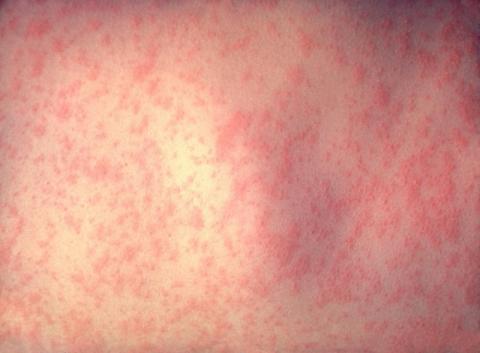Public Health Agency declares measles outbreak

The Public Health Agency (PHA) has declared an outbreak of measles after four cases of the disease were detected in Northern Ireland over the past week.
All four cases have occurred among young people in south Belfast.
PHA has contacted the parents and guardians of other children who may have been exposed to these cases advising them of the situation and of the need to rapidly protect unvaccinated individuals with the MMR (measles, mumps and rubella) vaccine.
Dr Richard Smithson, Consultant in Health Protection, PHA, explained: “In Northern Ireland we have had high uptake levels for MMR immunisation, which is why we have generally seen very few cases of measles here compared with the rest of the UK and the Republic of Ireland. However, cases which have occurred here in unvaccinated people are of serious concern and remind us that there is no room for complacency. For those children and young people who have not been vaccinated, it is essential that they get vaccinated as soon as possible.
“Children who are not already fully vaccinated should go to their GP for the MMR vaccine as soon as possible. The PHA advises that anyone who may have been in contact with a measles case and who feels at all unwell should stay at home as this is an infectious condition even before the associated rash develops. If medical advice is needed, then they should phone the GP or out-of-hours service so that arrangements can be made to see the patient without putting others at risk.”
GPs, hospital staff and emergency department staff have also received letters advising them to be vigilant for measles in patients presenting to them.
The PHA is reminding parents and individuals about the importance of protecting their children and themselves against this serious infectious disease, which can be life-threatening and can spread to those who are unprotected.
Although most common in children, it can occur at any age. Measles is a highly infectious disease for those who have not been protected by vaccination and can be caught either through direct contact with an infected person or through the air when the patient coughs or sneezes.
Dr Smithson continued: “MMR immunisation is the safest and most effective way to prevent measles infection. It is never too late to vaccinate and I would encourage children and young people of all ages to have two doses of the MMR vaccine to ensure they are protected. It is vitally important to ensure children and young people's vaccinations are up to date, particularly if they are in groups or settings where they may be at risk of getting an infection or, if they are infected, of passing on infection to other vulnerable individuals.”
What to look out for
Around nine to 11 days after being in contact with the measles infection, the following symptoms begin to appear:
Cold-like symptoms, such as runny nose, watery eyes, swollen eyelids, and sneezing;
Red eyes and sensitivity to light;
A mild to severe temperature, which may peak over 40.6°C (105°F) for several days. Temperature may fall after several days, but may go up again when the rash appears;
Tiny greyish-white spots (called Koplik's spots) in the mouth and throat;
Tiredness, irritability and general lack of energy;
Aches and pains;
Poor appetite;
Dry cough;
A red-brown spotty rash that appears three to four days after first symptoms, and lasting for up to eight days. The spots usually start behind the ears, spread around the head and neck, and after two to three days spread to the legs and the rest of the body. The spots start small but quickly get bigger and often join up together. Similar looking rashes may be mistaken for measles, but measles has a range of symptoms, not just a rash.
Most childhood rashes are not measles but you should consult your GP without delay if:
you suspect it is measles;
symptoms worsen;
temperature increases to above 38°C;
temperature stays high after other symptoms have gone.
It is important that anyone with suspected measles should avoid a situation where they can spread the disease, such as a GP’s waiting room or an emergency department waiting room. People should therefore phone in advance and get advice rather than just turning up to these places.
Ends
Contact PHA Communications on 028 9055 3663
Latest MMR uptake is 95.3% for one dose by two years of age, and 91.4 for two doses by five years of age. While these uptakes are good they still do not reach the World Health Organization (WHO) target of 95% for both doses.
